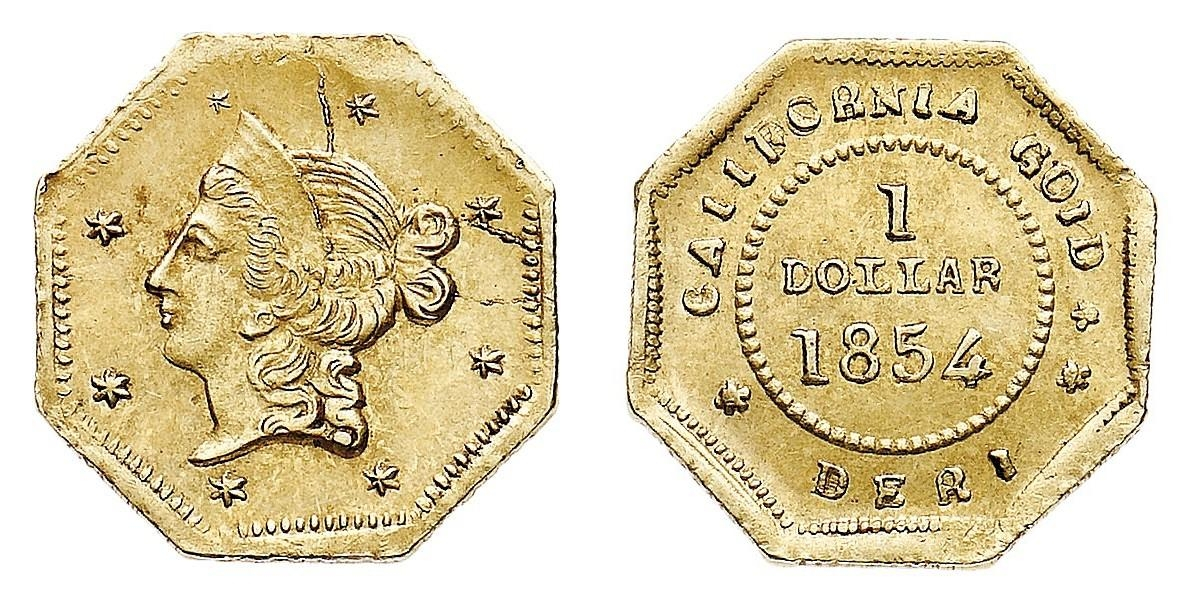New Variety of California DERI $1 Discovered!
Turned up unattributed in a distant land. Wish I could say I bought it, but I sure did try!

Andy Lustig
Doggedly collecting coins of the Central American Republic.
Visit the Society of US Pattern Collectors at USPatterns.com.
Doggedly collecting coins of the Central American Republic.
Visit the Society of US Pattern Collectors at USPatterns.com.
15
Comments
Wow... very interesting..... Amazing how these unique 'treasures' show up from time to time.... I believe there are many more 'treasures' out there - in other countries, old collections stored away, lost and to be found.... That is why I keep looking, everywhere. Cheers, RickO
Cheers, RickO
I’ll ask the dumb question: how do you know it’s genuine?
It just looks exactly like it should look, based on all of the other DERI dollars I've seen.
Also, it's a previously unrecorded marriage of two known dies, so we already know pretty much exactly what each side should look like.
Doggedly collecting coins of the Central American Republic.
Visit the Society of US Pattern Collectors at USPatterns.com.
I concur ... initial thoughts are authentic example.
Top 10 Cal Fractional Type Set
successful BST with Ankurj, BigAl, Bullsitter, CommemKing, DCW(7), Downtown1974, Elmerfusterpuck, Joelewis, Mach1ne, Minuteman810430, Modcrewman, Nankraut, Nederveit2, Philographer(5), Proofcollection, Realgator, Silverpop, SurfinxHI, TomB and Yorkshireman(3)
what does DERI stand for?
Deriberpie
Pronounced Derh-ee-bur-pee
M. Deriberpie engraver
58 Kearny Street San Francisco
originally his last name may have been Deriberpe
@CaptainBlunt said:
Deriberpie
Pronounced Derh-ee-bur-pee
Isn't that what DQ calls its carbonated Slushies?
Doggedly collecting coins of the Central American Republic.
Visit the Society of US Pattern Collectors at USPatterns.com.
They would if it didn’t take 20 minutes to get one.
This one's close, BG-529 with the 3 star reverse.
Kinda short on obverse dentils, though.
https://www.pcgs.com/coinfacts/coin/1854-1-bg-529/10506
Correct I think the reverse is the same as BG 529
The Obverse is the same die used
on BG 526 with the die crack
So the combo is BG 526 obv.
BG 529 rev.
OK, cool, I see now.
I didn't check BG-526 before, because it had the reverse dated 1853, and I was looking for 1854.
https://www.pcgs.com/coinfacts/coin/1853-1-bg-526/10503
Andy - thanks very much for all this information! I'm very curious as to which auction this appeared in, and how much it sold for. Also, did the auction house/seller realize it was a new variety? Or did the bidders? If the BG book ever gets updated it would be nice to credit someone as the "discoverer" of this new variety. With great appreciation, Bob Lande a/k/a Calgoldguy
It was in a European auction. Unattributed, with a starting bid of 150 euros. At least two bidders caught it, because I was one of them and I did not buy it with what I considered a very competitive bid. I'll PM the rest of the details but, as a courtesy to the buyer, I won't share them publicly.
Doggedly collecting coins of the Central American Republic.
Visit the Society of US Pattern Collectors at USPatterns.com.
Thank you. Bob Rlande@ubalt.edu
Auctions are generally considered public.
Ed. S.
(EJS)
I agree that auction results are generally considered public information. Both the name of the auction house and the price. But the names of the buyer and the seller are not always public.
In fact, auction results are often considered the most reliable indicators of a coin's true value. More reliable than if a dealer simply reports that he sold a coin for $XXX.